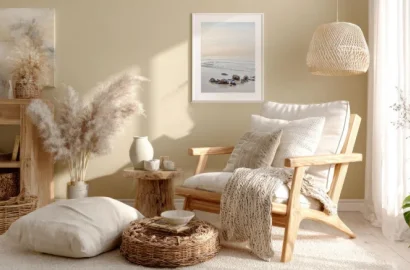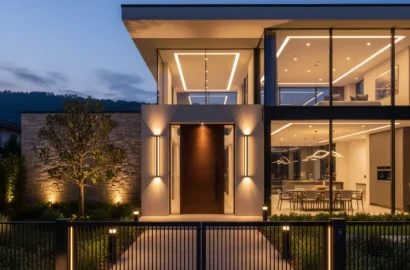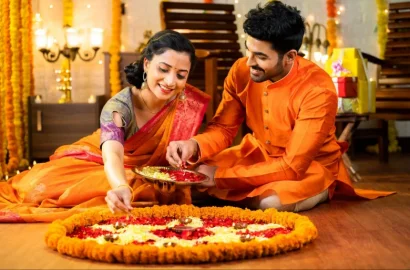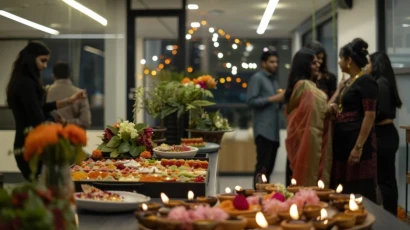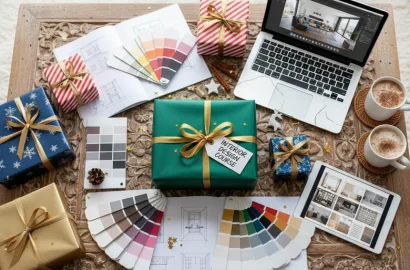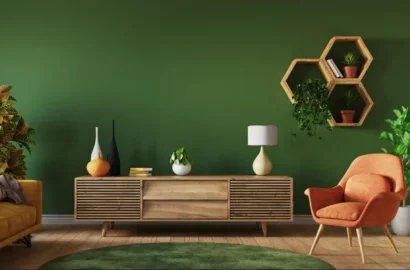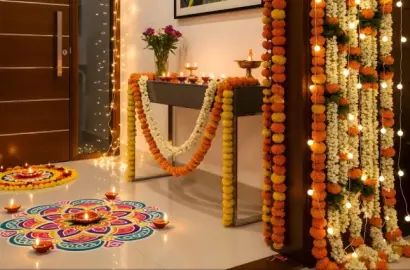Find out how rustic interior design got its name and how you can incorporate it into your home. Read on to learn all about it!
There are as many interior design styles as there are genres of music –there might even be a style for every personality archetype. The Rustic interior design style is one of them. It is commonly associated with words like warm, earthy, welcoming, and inviting among others. But why is that? What is it about a rustic home design interior that makes it inviting? What does it even mean for a design to be inviting and warm? Does contemporary rustic interior design have to do anything with rust? If not, then why is it called that? These are fundamentally important questions that, when answered, reveal the true essence of Rustic interior design, and tell us what it means for a place to be designed in that fashion.
In this article, we will unpack modern rustic interior design and some of its different varieties in great depth and answer the questions mentioned above.
Here is a list of topics that we have discussed in the article:
- What is Rustic Home Interior Design?
- Essential Elements of Rustic Home Design
- Why Rustic Interior Design is Timeless
- Rustic Interior Design Trends for 2025
- How to Incorporate Rustic Design in Different Rooms
- Tips for Achieving a Rustic Look
- Common Mistakes to Avoid in Rustic Design
- Final Thoughts
- FAQs

What is Rustic Home Interior Design?
Rustic interior design, in essence, is design that is rural. Definitions of rustic interior design refer to it as nature-inspired, welcoming, warm, and cozy with natural, aged, organic, and distressed elements. This goes back to its rural origin, which started with the 19th century Arts and Crafts movement, a reactionary movement to the Industrial Revolution. Figures like William Morris in England and Gustav Stickley in the United States became leading voices in this movement. Morris, a designer, poet, and socialist activist sought to revive the art of handmade goods, so he created wallpapers, textiles, and furniture that used natural materials and the skill of the poor working-class artisan. In America, Stickley’s designs were supposed to be simple, sturdy, and functional. They were made from oak and other natural materials to be used in lodges, cabins, and visiting centers. His work, along with that of other designers helped define the rustic design style on the other side of the Atlantic.
The term ‘rustic’ originates from the Latin word rusticus, meaning “of the countryside”. Further, this rural aspect is what creates the context (rules) for the design story to be told using the various symbols – elements of the design; and is the reason why a rustic house interior design feels warm, welcoming, and inviting, and has natural, organic and distressed elements. It is accommodating for and keeping up with, the community that the house is supposed to be a part of.

Essential Elements of Rustic Home Design
In the previous section, we explored what rustic design is and where it comes from. Let’s now explore the various elements of rustic design and their various functions.
1. Use of Natural Materials
One of the most defining features of rustic design is the use of natural materials. Wood, stone, and clay are the primary materials used in this style and are often left in their raw or minimally processed state. For example, when wood is used in its natural form, it has visible grain, knots, and imperfections, rather than being cut, polished, or painted. When stone is used for walls and floors, only the shape or form is manipulated barring rough texture and natural colors.
2. Emphasis on Handcrafted Objects
Another key element of rustic design is the intentional emphasis on craftsmanship and handmade objects. In rustic interiors, you will often find furniture and decor that derive their value from being artisanal. For example, hand-carved wooden tables, hand-woven textiles, or hand-forged metal fixtures. This focus on craftsmanship can be traced back to the Arts and Crafts Movement of the 19th century, in response to the dehumanizing effects of industrialization.
3. Rough Texture
Texture is another important element of rustic design easily facilitated by the use of natural materials and handmade objects. Rough-hewn (appears to be cut with an axe) wood, stone walls, and woven textiles, for instance, are the most common textures. These textures emulate the effect of having been worn and weathered over time which can be traced back to the medieval and rural origins of rustic design, where homes were built to withstand the elements and the practical needs of agrarian life.
4. Muddy Color Palette
Color palettes in rustic design are typically inspired by nature, with earthy and muddy tones like browns, greens, grays, and beiges taking priority in the scheme. These colors are supposed to symbolize the natural world and the landscapes of rural settings. For example, the warm browns of wood and the grays of stone, the greens of plants, or the muted tones of hand-dyed textiles- all commonly used in this style.
5. Focus on the Seating Area
Another key aspect of the rustic interior design is the attention to the seating area. There has to be at least one space in the interior for the collective. A place where a group of people can socialize and spend leisure time, and this becomes a focal point within rustic interior design. For instance, a patterned rug with soft cushion balls as stools, or a sofa bed. This ties back to the rural context of the style which is supposed to accommodate the community.
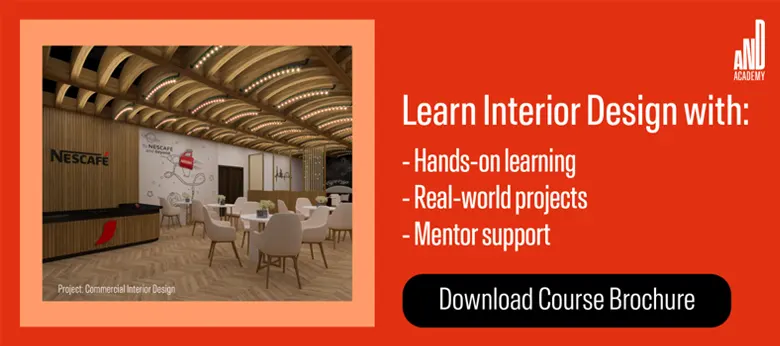
Why Rustic Interior Design is Timeless
At its heart, rustic design is timeless because of its simplicity and authenticity, for which there is a universal human desire. This desire is not tied to any particular era or trend; rather, it is rooted in the fundamental human need to feel connected to nature and to the past. The use of raw, untreated/natural materials like wood and stone, for example, signals a sense of history and permanence, a time when life was slower and more closely tied to the land. This effect was at a time so strong that it gave birth to a subgenre referred to as rustic cottage interior design. The connection to nature and tradition is something that people have always valued, and it is why rustic design is relevant.
Once it became popular, redefinition and adaptions of the classic rustic design came up. For instance, when it became popular in America, particularly in the southern and native American regions, woven textiles and earthy color palettes took priority and influenced rustic farmhouse interior design. Classic rustic design mixed with the principles of minimalism and functionality to create a style known as rustic Scandinavian interior design characterized by natural light, airy spaces, and clean lines. When it got to France, it mixed with the arrogant elegance and charm of the place referred to as rustic French country interior design or simply ‘Provence’ style, characterized by soft pastel colors and a mix of vintage and handmade ornate objects. In this way rustic design continues to evolve and adapt, retaining its relevance regardless of the era.

Rustic Interior Design Trends for 2025
When we say rustic interior design trends, we refer to the ways in which general design trends affect a specific style of interior design. As we look ahead to 2025, rustic interior design continues to evolve, reflecting the zeitgeist of our time. Let’s discuss some of these trends.
1. Sustainability: Sustainability is a key theme right now, as people become increasingly aware of the environmental impact of their choices. In rustic design, it manifests in the use of reclaimed and repurposed materials, as well as locally sourced materials.
2. Color Drenching: Color drenching is another major trend in interior design, in rustic interiors, this trend is applied using muted, nature-inspired hues. For example, a living room can feature walls, and furniture, all in varying shades of olive green.
3. Biophilic Design: Another popular trend includes the integration of biophilic design. This involves incorporating more plants and natural elements into interiors, such as ‘living walls’, potted trees, or stone water features.
4. Red Color: The burgundy red is back in 2025 as a statement wall finish and a built-in color. Say you want a butler pantry that has a bold color, or a centerpiece, the muted reds can give just the right amount of pop.
5. English Kitchen: The traditional and cozy feel of the English kitchen design with its furniture-inspired cabinets and drawers is making a comeback. The focus is on customization of the traditional-looking utensils, knobs, hooks, pegs, and other little details.
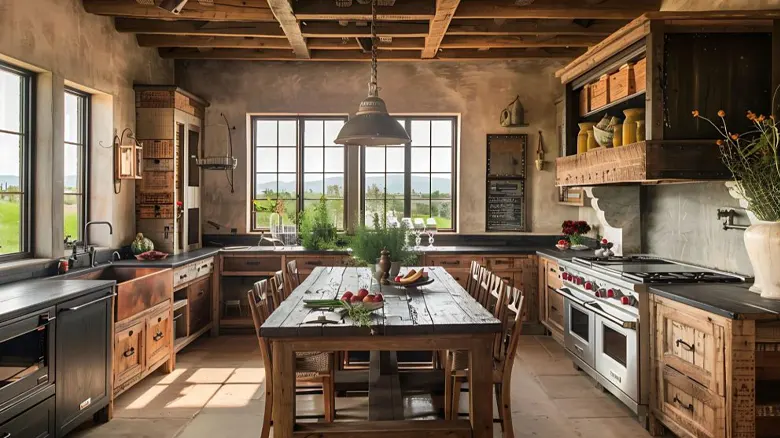
How to Incorporate Rustic Design in Different Rooms
Rustic design, with its emphasis on natural materials, handmade craftsmanship, and inviting aesthetics, can be incorporated into every room. Here’s how to bring the rustic into different spaces:
1. Living Room
The living room is the focal point of a home, and in a typical rustic design style, it should feel warm, welcoming, and connected to nature. Start with a foundation of natural materials, such as hardwood floors or stone textured walls, which serve as the backdrop of the rural aesthetic. Exposed wooden beams on the ceiling are a common element that instantly teleports back in time. A large rug in earthy tones can soften the space and make it feel cozy.
For furniture, opt for pieces made from reclaimed wood or distressed leather, such as a sturdy coffee table or a comfortable sofa. Handwoven textiles, like throw blankets and cushions, can add texture. Add handmade or vintage decor, such as a wrought iron (dark-colored steel) chandelier or a collection of pottery, to enhance the rustic vibe. Lastly, bring in elements of nature, like potted plants or a bowl of pinecones, to complete the look.
2. Dining Room
The dining room is where family and friends come together and the phenomenon of socializing takes place. A large round wooden dining table, preferably made from reclaimed or natural wood, can be the centerpiece of a rustic dining room. Pair it with mismatched chairs or benches to create a casual feeling.
For the walls, consider using stone or reclaimed wood paneling to create texture. Table settings can include handmade ceramics, linen napkins, and simple centerpieces like a wooden bowl or a vase of wildflowers. The goal is to encourage sharing, in conversations and of the food.
3. Bed Room
The bedroom of a rustic home is like a nest. Start with a wooden bed frame, preferably made from reclaimed or natural wood, as the focal point. Layer the bed with soft, textured linens in neutral or earthy tones, such as beige or gray. Add a handmade quilt or a knitted throw.
For flooring, consider hardwood or a natural fiber rug, such as jute. Incorporate vintage or handmade decor, like a distressed wooden dresser, or a wrought iron mirror. Lighting can be soft and warm, with options like a wooden bedside lamp or a pendant light. Lastly, bring in elements of nature, such as potted plants or a vase of dried flowers, to create a natural atmosphere.
4. Kitchen
The kitchen of a rustic household has to have a focus on functionality. Start with cabinetry made from natural wood, preferably with a distressed or weathered (manufactured damage) finish, to create a sense of gravitas. Open shelving can be used to display handmade ceramics, vintage cookware, or jars, adding to functionality.
For countertops, consider butcher block, stone, or concrete, which align with the rustic aesthetic. Lighting can include wrought iron pendant lights or a chandelier made from reclaimed wood. Incorporate natural elements, such as a wooden cutting board, a bowl of fresh produce, or a herb garden on the windowsill, to enhance the connection to nature.
5. Bathroom
Being relatively smaller in area, bathrooms are easier to ‘rustic-ate’. Start with natural materials, such as stone or wood, for the flooring and walls. A wooden vanity, preferably made from reclaimed or distressed wood, can be the focal point. Pair it with a stone or concrete countertop and a vessel sink.
For the shower or bathtub area, consider using stone tiles or pebble flooring to create a spa-like atmosphere. Incorporate vintage or handmade decor, such as a wrought iron towel rack, or a wooden stool. Lighting can be soft and warm, with options like an iron sconce or a pendant light with a linen shade. Pendant lighting is common in rustic interiors since they resemble hanging lamps of the olden days. Finally, bring in elements of nature, such as potted plants, or a vase of eucalyptus.

Tips for Achieving a Rustic Look
Here are some practical tips to help you achieve the rustic aesthetic, including creative ideas for upcycling, art, and decor:
1. Embrace Upcycling and Repurposing
Upcycling and repurposing old or unused items align with the rustic philosophy and add a personal touch to your space. For example, an old wooden ladder can be repurposed as a towel rack in the bathroom or a blanket holder in the living room. Vintage crates can be turned into shelves or storage units.
2. Incorporate Handmade and Artisanal Elements
The rustic design celebrates the beauty of handmade craftsmanship. Look for local artisans or small businesses specializing in handmade goods, or try DIY projects like macramé (Knotting technique) wall hangings or hand-painted signs.
3. Add Texture for Depth and Interest
Texture is a crucial element in rustic design. Layer different textures to create a cozy atmosphere. For example, pair a rough-hewn (cut with an axe) wooden coffee table with a soft, woven rug and linen throw pillows. Use stone walls or exposed brick to add a rugged texture and woven baskets or knitted blankets.
4. Incorporate Nature-Inspired Art and Decor
Art and decor inspired by nature can enhance the rustic vibe of your home. Consider botanical prints, landscape paintings, or wildlife photography for your walls. You can also create nature-inspired art, such as pressed flower frames or driftwood sculptures. Decor items like antlers, pinecones, or dried flowers can add a touch of the outdoors to your interiors.
5. Choose Earthy, Muted Colors
Stick to colors inspired by nature, such as warm browns, soft greens, dusty blues, and muted grays for walls, furniture, and textiles. If you want to add color, consider using natural dyes or muted tones that complement the overall palette. The goal is to create a connection to the natural world.
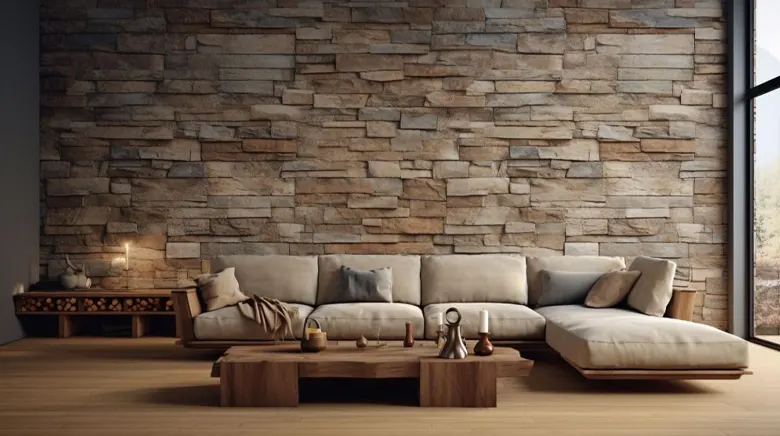
Common Mistakes to Avoid in Rustic Design
Here are a few mistakes to avoid when creating a rustic interior.
1. Overloading on One Color or Material
While earthy tones and natural materials are central to rustic design, using too much of one color or material can make a space feel monotonous. For example, an all-wood room with brown walls, wooden furniture, and wooden decor can feel overwhelming and can lack visual interest. To avoid this, mix different materials and textures.
2. Ignoring Scale and Proportion
It’s important to consider scale and proportion to avoid overwhelming a space. For example, a massive wooden dining table might look out of place in a small dining room, while a tiny rug can make a large living room feel disjointed. Choose furniture and decor that fit the size of your room, and leave enough open space.
3. Overdoing the “Distressed” Look
While distressed and weathered elements are a key part of rustic design, overdoing this look can make a space feel contrived or overly staged. Prioritize genuine vintage or reclaimed items with a natural patina (a kind of rust). If you do use distressed pieces, balance them with smoother, more polished elements to create a balanced and realistic look.
4. Neglecting Lighting
A common mistake is relying solely on overhead lighting, which can make a room feel cold and uninviting since overhead lighting is an industrial concept and does not fit in a rural context. Instead, use a combination of lighting sources, such as table lamps, floor lamps, and pendant lights that throw light on objects from the sides rather than from the top, to create a naturally lit effect. You can also check out this project by AND Learner, C. Monica Reddy, to further understand how lighting can impact the design and feel of your room.
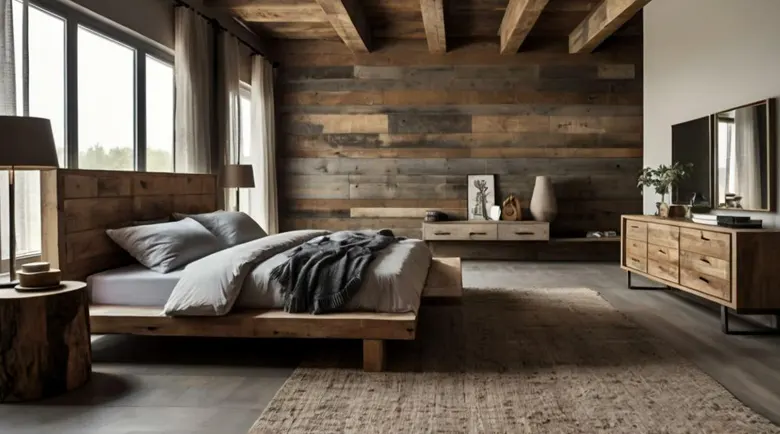
Final Thoughts
Rooted in a reaction to industrialization, rustic interior design has evolved into a timeless aesthetic that resonates with people seeking warmth, simplicity, and a connection to the natural world. If you want to design for a traditional home, a relaxed beach house, or an industrial office, rustic philosophy offers possibilities for creating warm and welcoming spaces.
FAQs
1. What is the best wood for rustic furniture?
- Reclaimed wood, oak, and pine are ideal for rustic furniture. Oak lasts for generations and pine ‘distresses’ easily.
2. Can rustic design work in small spaces?
- Yes! Light colors, smart storage solutions, and minimalistic furniture can help make the most of available space in smaller homes.
3. Is rustic design expensive?
- Not necessarily. Many rustic pieces can be found in thrift stores or created through DIY projects.
4. How can I incorporate rustic design into a beach house?
- Use weathered wood for furniture and accents, such as driftwood tables or reclaimed wood paneling. Incorporate natural textures like jute rugs, linen textiles, and woven baskets. Choose a color palette as soft blues, sandy beiges, and whites.
5. Can rustic design be combined with industrial style?
- Yes, the industrial rustic interior design style is a popular fusion that combines the raw, rugged elements of industrial style with the warmth of rustic design. It features materials like exposed brick, metal beams, and concrete floors with reclaimed wood, leather, and handmade textiles. The color palette includes neutral tones like gray, black, and brown, with pops of earthy colors.
Next Steps
To learn more about interior design, visit our blog, or consider the following resources:
- Watch this session by Snehanshu Mukherjee, Founding Partner at T.E.A.M, and Mansi Almadi, an Interior Designer at Studio Lotus
- Talk to a course advisor to discuss how you can transform your career with one of our courses.
- Check out our Interior Design courses - all courses are taught through live, interactive classes by industry experts.
- Take advantage of the scholarship and funding options that come with our courses to overcome any financial hurdle on the path of your career transformation.
Note: All information and/or data from external sources is believed to be accurate as of the date of publication.




